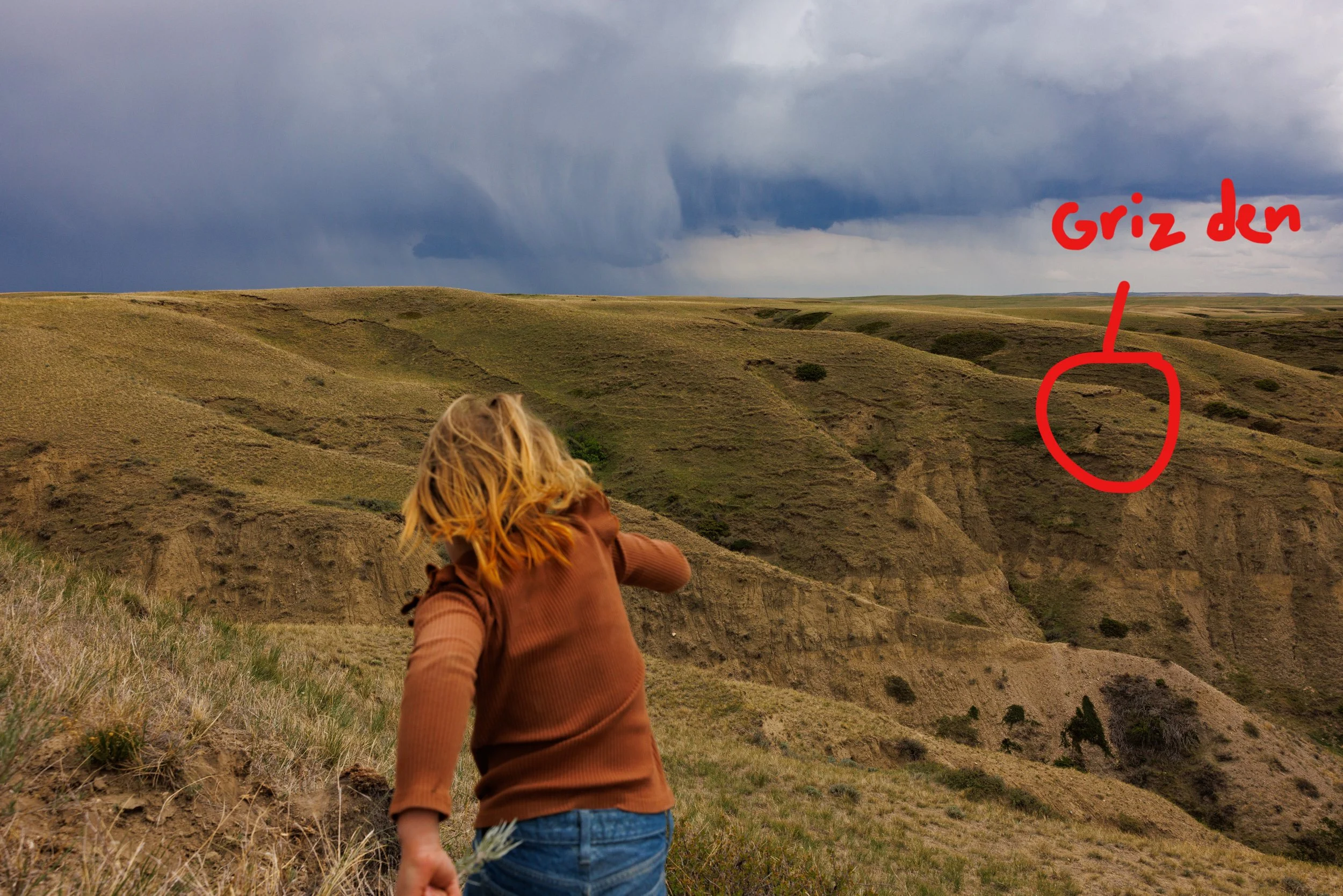Grizzly Bears Moving onto the Great Plains
〰️
Grizzly Bears Moving onto the Great Plains 〰️
High up a coulee on the Montana prairie, Seth and Jennie Becker look over the windswept landscape with binoculars and point out three grizzly bear dens along the rim of a canyon. The couple, who own Stick Leg Ranch, estimate there are eight grizzly bear dens nearby. After their nine-year-old nearly came face to face with a grizzly in their yard, they decided they needed to find a solution.
Over the last decade, grizzly bears have been expanding further and further east onto the Montana prairie. For example, a grizzly bear was caught on game camera in the Upper Missouri River Breaks in October 2023, hundreds of miles from the grizzly recovery zones of the Greater Yellowstone and Northern Continental Divide Ecosystems. It was the furthest east a grizzly bear had been seen in 100 years.
Grizzlies were designated a threatened species under the Endangered Species Act in 1975. By the 1970s, their population had dropped from historic estimates of 50,000 bears down to 700 individuals in the lower 48 states, according to the U.S. Fish and Wildlife Service. This dramatic population decline was due to the expansion of European settlers in the American West and practices of killing predators off the landscape.
In 2023, Montana Fish Wildlife and Parks estimated there were 2,100 grizzly bears in the lower 48 states, about three times their population size since their listing in 1975. As their population has grown, especially over the last 20 years, there have been ongoing debates on whether grizzly bears have recovered and therefore should be removed from the Endangered Species Act in Montana, Idaho and Wyoming.
Regardless of that debate, grizzly bears have been documented steadily moving east onto the prairie since the early 2000s. Instead of hibernating in the mountains at 6,000 to 10,000 feet, they are beginning to hibernate on the prairie and raise cubs. This is fascinating from a wildlife biology and conservation perspective, but it raises unique challenges for rural landowners, producers and wildlife managers. There is currently no known population estimate for prairie grizzly bears despite decades of sightings.
Grizzlies primarily travel along rivers and riparian corridors to navigate the human-dominated prairie landscape.
How are people, like the Beckers, adapting to grizzlies showing up in places they haven't occupied in 100 years? What tools are Tribes, grizzly bear specialists, or landowners using? What solutions, like livestock guardian dogs, electrification, or camera trap payment programs are emerging? What does coexistence or conflict between people and one of the most iconic species in North America look like? How do rural communities and Tribes feel about grizzlies moving onto the prairie? What education is being done?
A recent survey by the Human Dimension’s Lab at the University of Montana found support for grizzly bears in Montana. “We found 80% to 90% of respondents think bears have a right to exist – that they make Montana special and that we need to learn to live with them. But also, that over 80% want to see some form of grizzly hunting allowed,” explained study co-author and social scientist Alex Metcalf.
Grizzly bear prairie sightings 2009-2025
Data provided by Montana FWP
Photojournalist John Stember has spent the last year and a half working on a photo essay attempting to tackle some of these questions. He will continue to pursue this visual project over the summer and fall of 2025 through the Alexia Student Conservation Grant. He’s hoping to publish the work nationally and locally, kickstart conversations and collaborations, host artist talks, and find spaces to show the exhibition.





